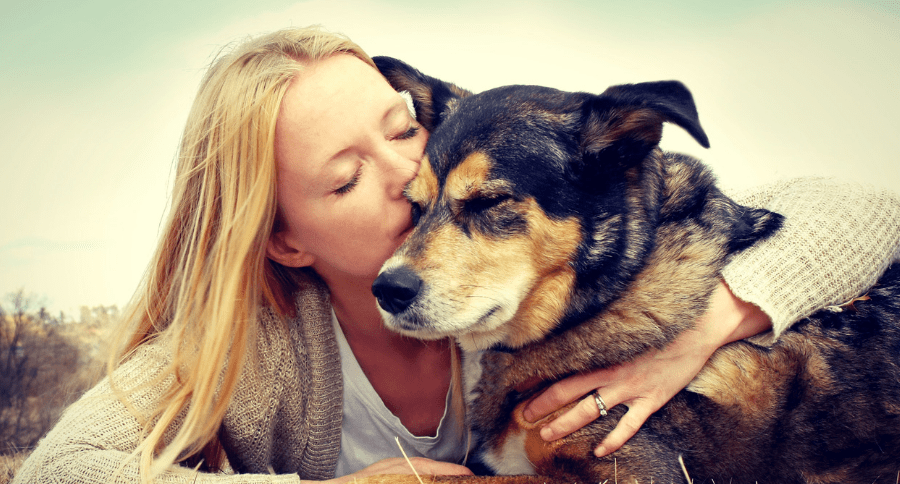Existing data says, "Don't hug the dog!" It raises their stress levels. Research tells us that there are more appropriate ways to tell your dog you love him, but it's hard to not give your dog a hug!
According to a study discussed in Psychology Today,
"One common visible sign of stress or anxiety is when the dog's ears are lowered or slicked against the side of his head. Lip licking or licking a person's face can also be signs of anxiety, as can yawning or raising one paw."
The results of the study conducted by Stanley Coren, a psychology professor emeritus at the University of British Columbia and a dog-training expert, indicates that many dogs being hugged appear to be unhappy. Researches saw in 81.6 percent of 250 photographs analyzed showed dogs who were giving off at least one sign of discomfort, stress, or anxiety.
In fact, hugging a dog may be associated with increasing the likelihood of a dog bite!
There are many signs of stress that dog owners can look for and Lili Chin's below drawing provides some great examples, including the one that indicates when your dog needs space.
Other signs of discomfort are the whale eye and lip licking which you'll find in other Lili Chin illustrations. Some dogs will also avoid direct eye contact as that can be seen as threatening.
The random sample of images in Google image search and Flickr that Dr. Coren browsed showed dog behavior resembling the above illustration.
There are better ways to let your dog know you love them.
Save your hugs for two-legged friends! Family members need to all be on board with the new rules and especially children, since hugging a dog can be unsafe under certain circumstances. Children shouldn't be expected to read dog behavior. Suggestions include belly rubs or kind words to show your dog affection. Leave reading body language to the adults as signs of anxiety can be tricky. Wagging the tail doesn't always mean dogs are happy!
This also applies to therapy dogs and all dog breeds. Therapy dogs are hard at work, and dog hugs are totally off limits.
Dr. Coren also categorizes dogs as cursorial animals that are known for running. The first line of defense for most dogs is to run! So flight not fight is typical dog behavior when they feel threatened.
Not everyone shares this point of view and other experts chimed in when the results were released. The general consensus is that during times of stress or dogs showing any signs of stress should be given space.
Dr. Marc Bekoff, a professor emeritus of ecology and evolutionary biology at the University of Colorado, Boulder, tells National Public Radio (NPR) it's OK to hug your dog — sometimes,
"Just like people, some dogs love it, some sort of like it, and some may not like the close contact at all," Bekoff writes in a response, also on Psychology Today's website. It's important to consider factors like how well a dog knows you and how noisy the environment is. "And, if you're unsure, don't hug the dog! Better safe than sorry," he writes.
Keep man's best friend from being an unhappy dog by respecting his personal space. That's true for humans and now we know definitively that it's also true for dogs. Psychology Today's article and Dr. Coren's research provides a lot of food for thought and it's always good to consider your dog's point of view.






